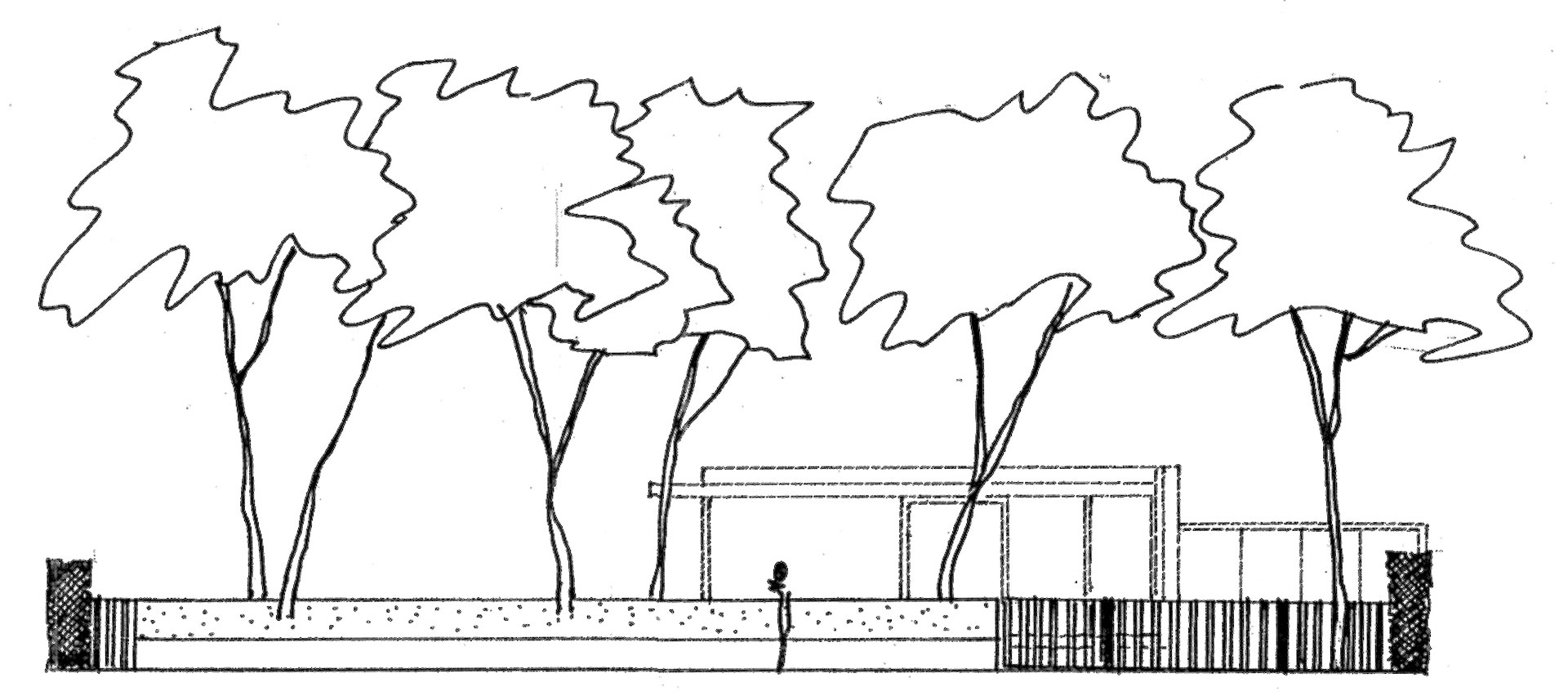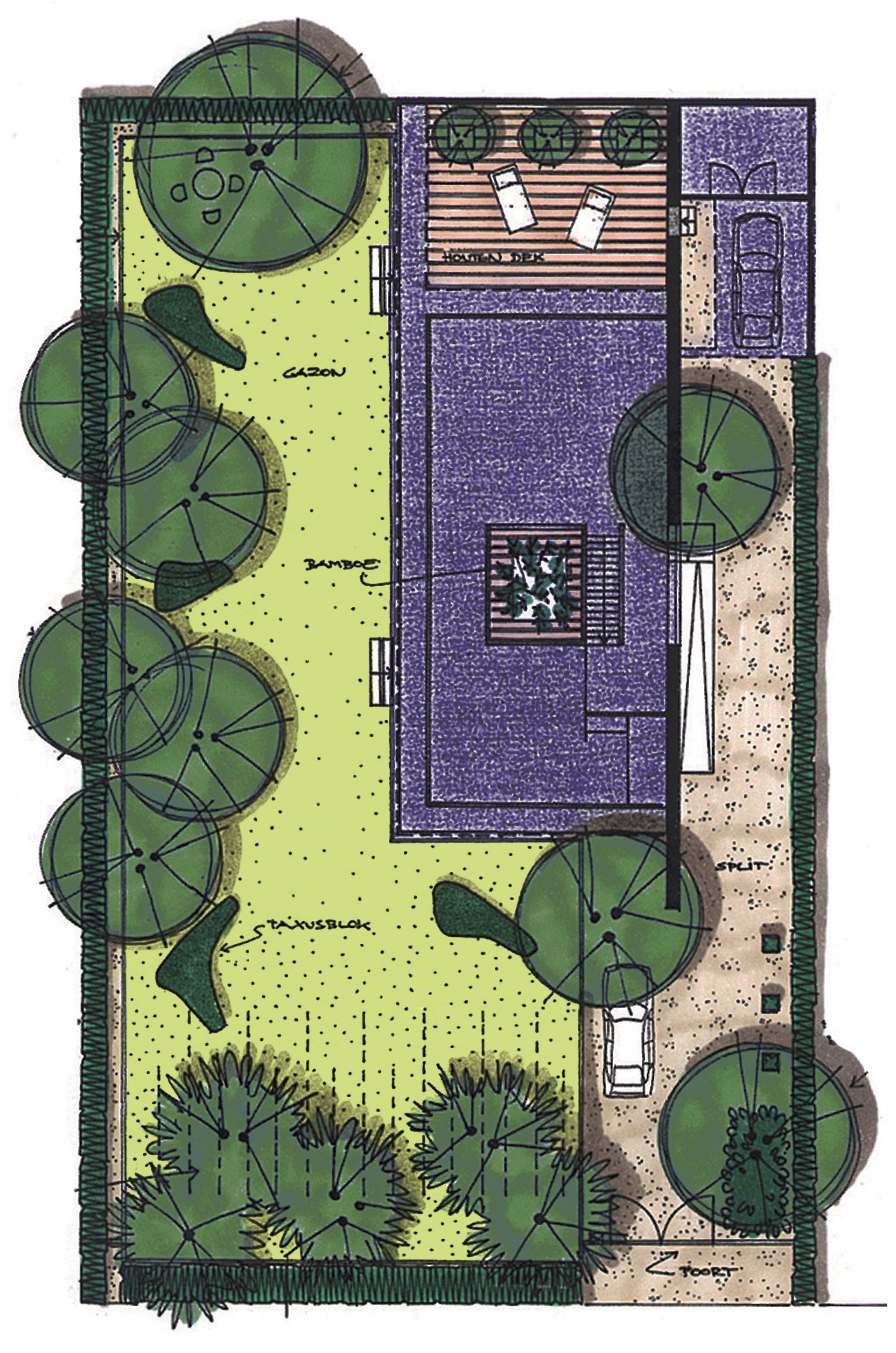Goirle
Client
- familie Van Esch
Surface
- 900 m2
Year of design
- 2004 - 2004
Year of fulfilment
- 2006 - 2006
Activities MTD
design and implementation preparation
Extra information
In collaboration with
Jacques de Brouwer / Bedaux & de Brouwer architects
Competence
- gardens
The modern urban villa belonging to the Van Esch family, which was designed by Jacques de Brouwer / Bedaux & de Brouwer Architecten, is situated along the old connecting road between Tilburg and Goirle. The building mass comprises two building layers; a first layer above the surface level and a second layer with the bedrooms and bathrooms below the surface level. Two patios provide for adequate lighting, one of which connects both building layers to each other. The raised ground floor level (about + 0.50 m) ensures that the building mass looks like it's floating and gives the garden an apparent continuity. The positioning of the villa on the plot divides the entrance area from a more private garden side.
In 2004 MTD landschapsarchitecten was commissioned to draw up a garden design in which the main objective was to enhance the perception of the garden as a spatial entity. During the design process there was a focused concentration on close cooperation between the client, the architect and the landscaping architect. Hence the architecture and the garden could be elaborated from a single integrated concept up to the detailing.
The first strategic challenge in the garden design was to optimize the spatial effect of the total plot. In order to achieve this, the garden has been created as far as possible into a continuous lawn, bordered by means of dual hornbeam hedges. As a plot boundary on the front a contemporary ‘ha ha’ has been used; at the public road the lawn ends in a ‘green’ embankment planted with currents. In this way a natural boundary is created, which ensures the desired privacy and filters the bustle of the city life away from the garden and the residence.
The framework of hedges makes up the architectural setting for carefully positioned, sculptural, multi-trunked trees; birches and Honey locust trees. They subtly define the horizontality and clean architecture of the villa, augmenting the ‘depth’ in the garden and create varying views across the relatively small plot. There is a particularisation by way of a solitary walnut tree; a ‘shady’ spot in the lawn; it's very nice to be here on a beautiful summers' day.
The patios in the building mass are perceived as ‘rooms outside’. The first one on the ground floor has been provided with a timber floor and results in a sheltered terrace and a spot for an old olive tree to grow. The second patio, which is a connection between the ground floor and the lower ground floor, has been planted with evergreen bamboo, 6 metres tall. Hence there is a ‘green’ connection between both levels and a filtering of the sunlight.





